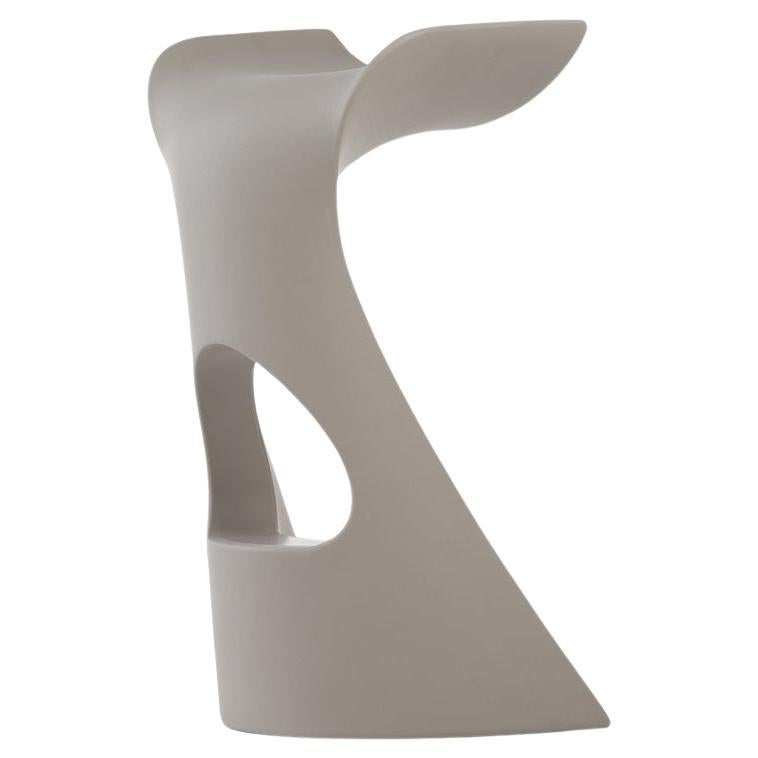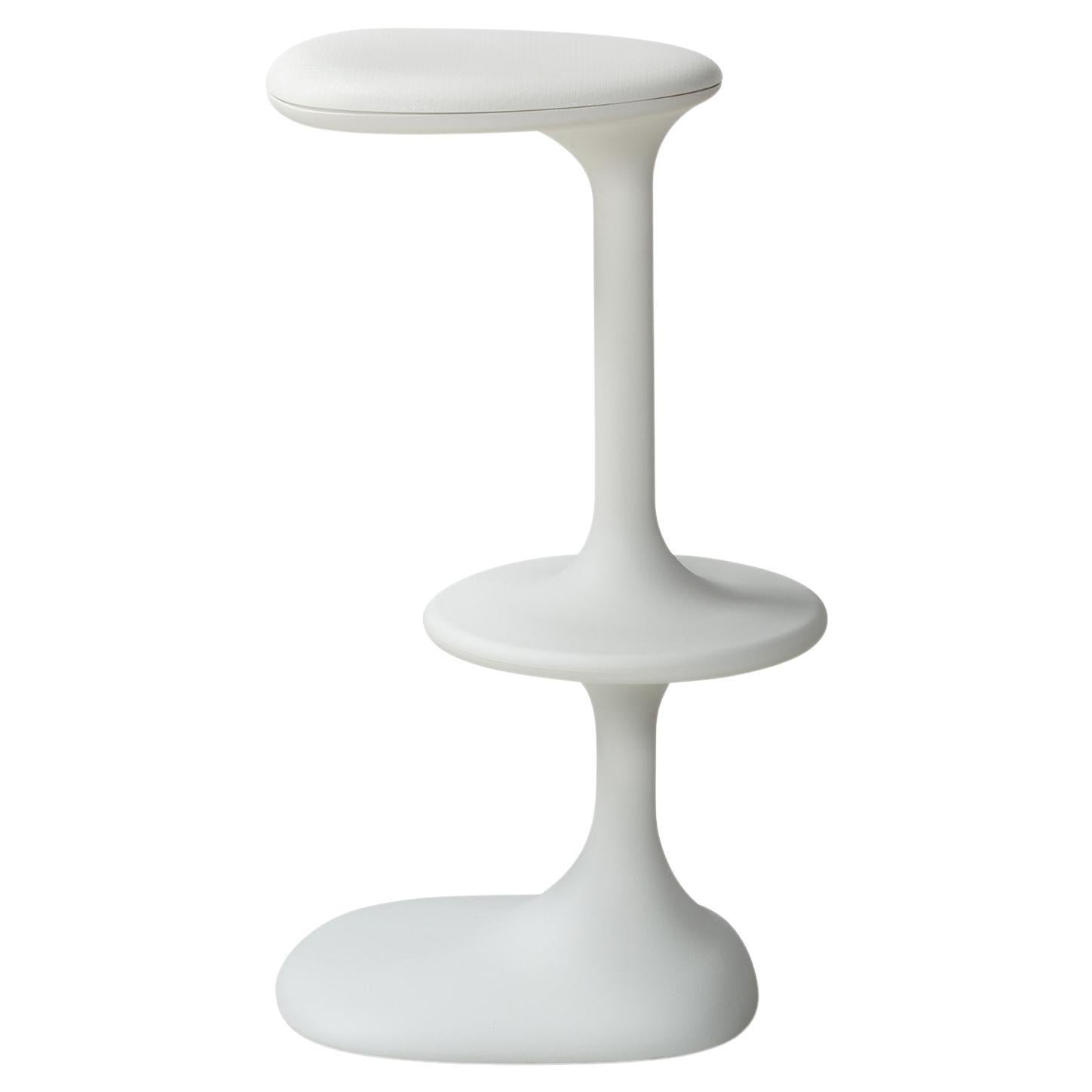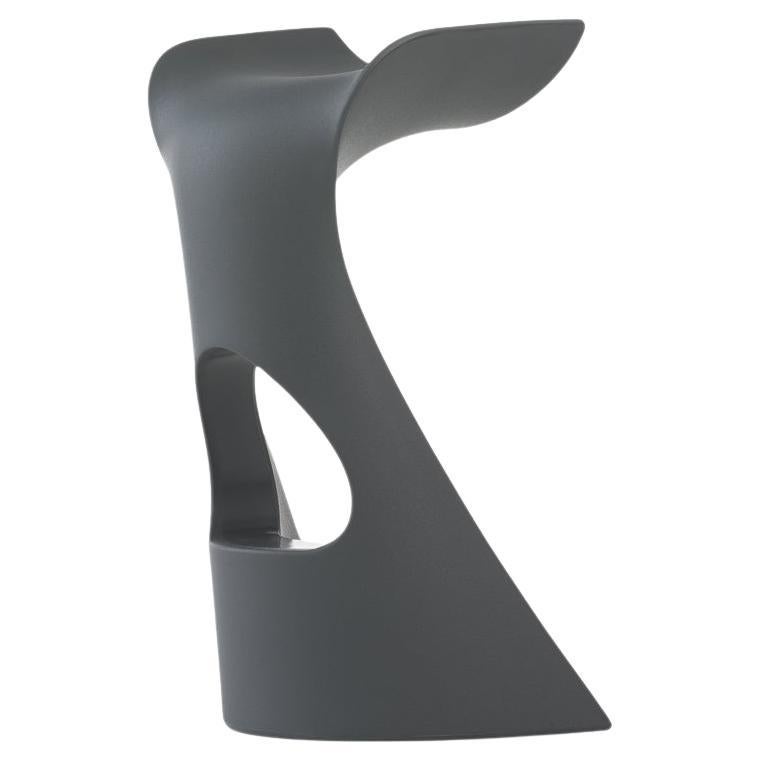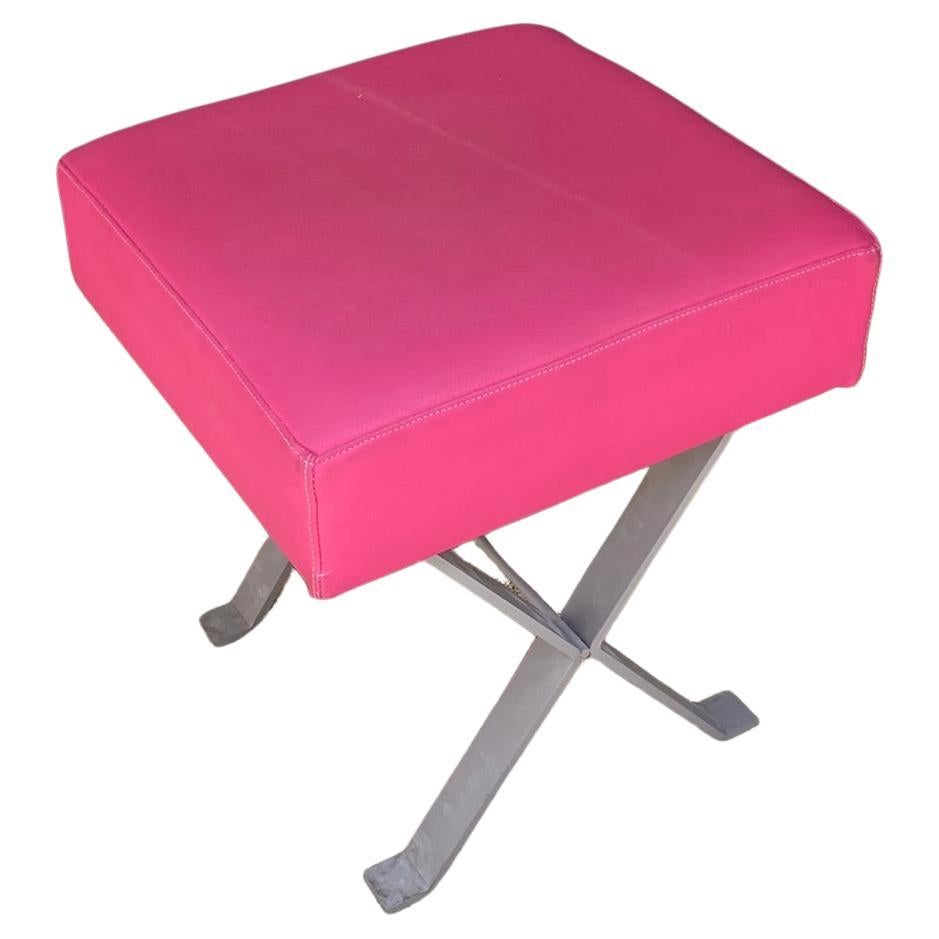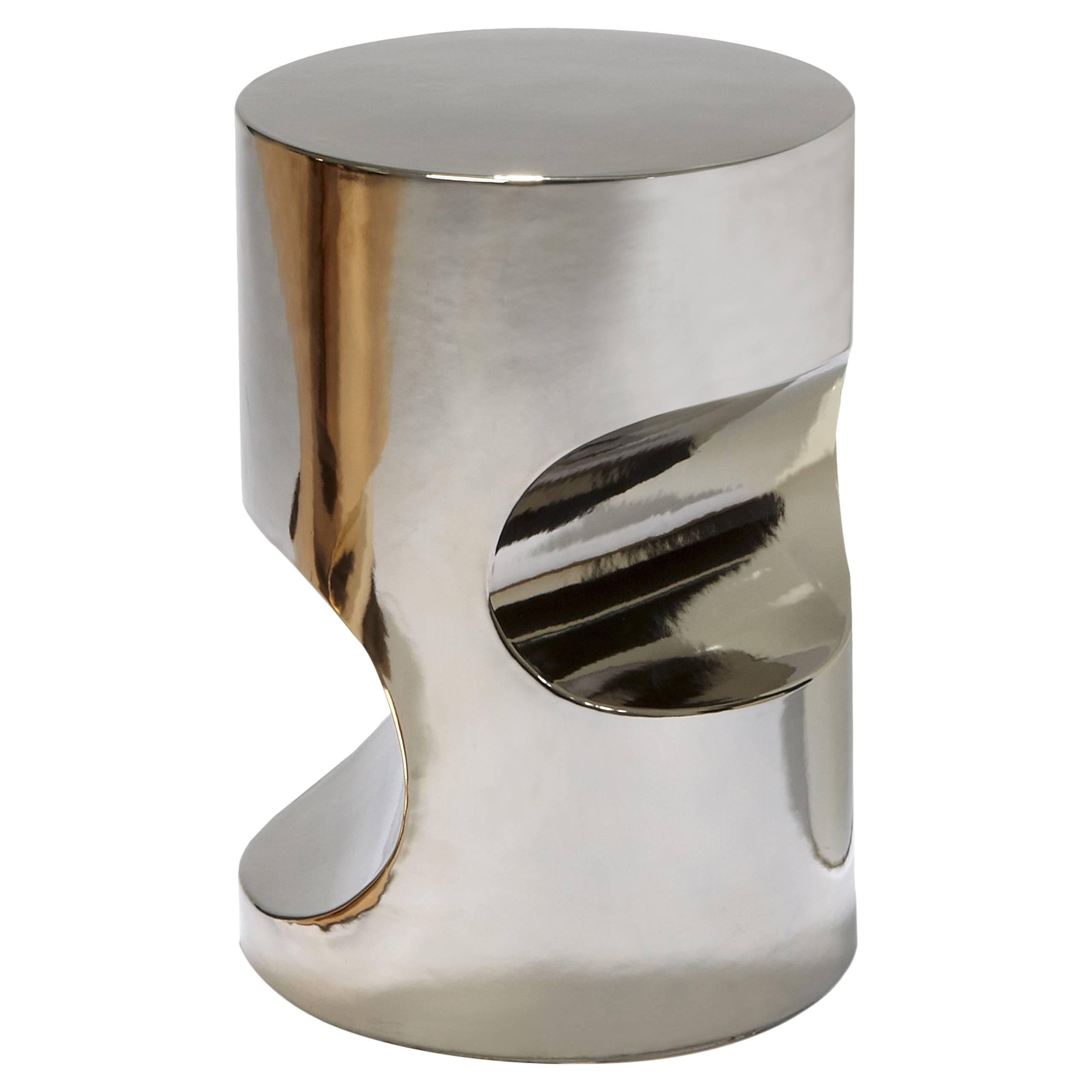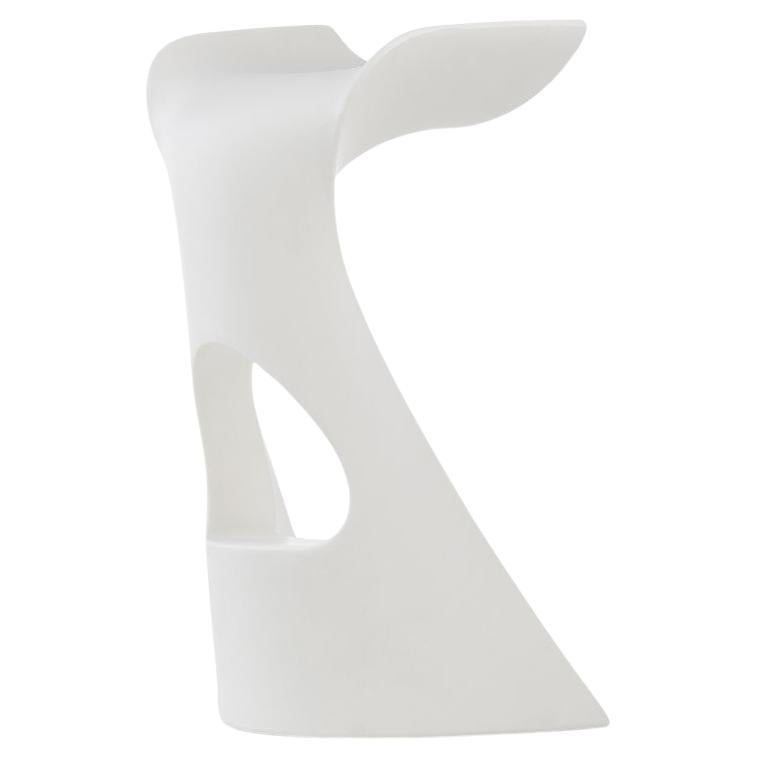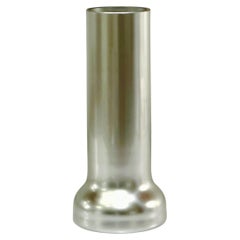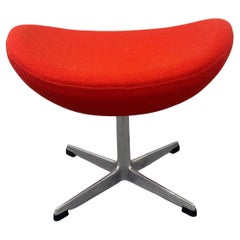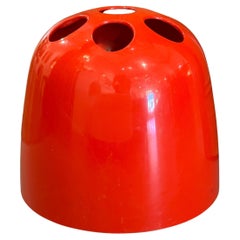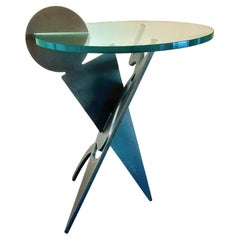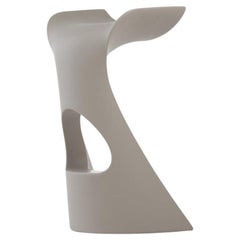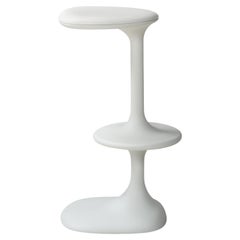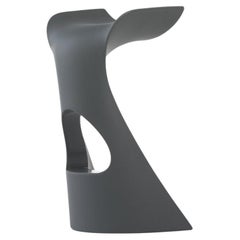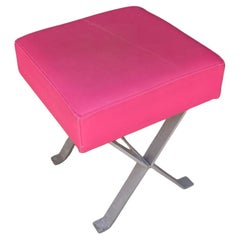Items Similar to Karim Rashid Silver Vinyl Shroom Stool for IDEE Limited Edition Signed Numbered
Want more images or videos?
Request additional images or videos from the seller
1 of 13
Karim Rashid Silver Vinyl Shroom Stool for IDEE Limited Edition Signed Numbered
$1,495
£1,129.68
€1,307.51
CA$2,097.41
A$2,332.92
CHF 1,223.85
MX$28,466.96
NOK 15,360.84
SEK 14,475.73
DKK 9,760.02
About the Item
Karim Rashid Shroom Stool designed for IDEE, Japan in 1998. This silver vinyl version was a limited edition and is signed and numbered #4/57 on the IDEE labeled fabric on the bottom of the stool. It was part of the TOTEM Design collection; TOTEM - The Objects That Evoke Meaning - was a a progressive and influential retail design gallery in Manhattan operating between 1994-2004 that represented cutting edge modern design of the period.
Overall the stool is on good condition with a couple small tears, minor dents and scuffs to the vinyl, and wear as shown in the detail photos.
The stool measures 18" high x 16 ½" wide x 14" deep.
Karim Rashid (born 1960) is an Egyptian-born and Canadian raised industrial designer. His designs include luxury goods, furniture, lighting, surface design, brand identity and packaging. Time magazine has described him as the "most famous industrial designer in all the Americas" and the "Prince of Plastic". He is based in New York City, as well as Belgrade, Miami and India.
Rashid's work is featured in 20 permanent collections. His pieces are exhibited in museums worldwide, including the MoMA, Centre Pompidou, and SFMOMA. He is known for designs such as the "Garbo" waste can and "Oh Chair" for home accessories company Umbra, a concept store for Giorgio Armani, perfume bottles for Kenzo, bobble water bottle, watches and tableware for Alessi, lighting for Artemide and Martinelli Luce, and products for Veuve Clicquot. He has also worked with Audi, Samsung, Swarowski and Armani. In addition Rashid has designed for Kenzo, Method, Bombay Saffire, Finé Water Japan, Sexy Beast USA, Davidoff, Issey Miyake, Estee Lauder.
While working for Ettore Sottsass, Rashid became dedicated to infusing his pieces with a welcoming "human" quality, finding the majority of industrial designs to be too imposing. Rashid has discussed his interest in the psychological power of objects and spaces, and often works with color palettes which have emotional significance to him; pink, for example, is a staple in his designs as he believes it "creates a sense of well-being, or energy, or of positive spirit," and lime green is used in kitchens as it is "conducive to dining". The mid-century modern influence is evident in Rashid's work, though he prefers to embrace the digital world and look toward the future for inspiration. His style is sometimes described as "sensual minimalism". - Wikipedia.
- Creator:Idée Japan (Manufacturer),Karim Rashid (Designer)
- Dimensions:Height: 18 in (45.72 cm)Width: 16.5 in (41.91 cm)Depth: 14 in (35.56 cm)Seat Height: 18 in (45.72 cm)
- Style:Futurist (In the Style Of)
- Materials and Techniques:
- Place of Origin:
- Period:1990-1999
- Date of Manufacture:1998
- Condition:Wear consistent with age and use. Minor losses.
- Seller Location:Cathedral City, CA
- Reference Number:Seller: OC 91791stDibs: LU8352233614892
About the Seller
5.0
Gold Seller
Premium sellers maintaining a 4.3+ rating and 24-hour response times
Established in 2000
1stDibs seller since 2023
23 sales on 1stDibs
Typical response time: <1 hour
- ShippingRetrieving quote...Shipping from: Cathedral City, CA
- Return Policy
Authenticity Guarantee
In the unlikely event there’s an issue with an item’s authenticity, contact us within 1 year for a full refund. DetailsMoney-Back Guarantee
If your item is not as described, is damaged in transit, or does not arrive, contact us within 7 days for a full refund. Details24-Hour Cancellation
You have a 24-hour grace period in which to reconsider your purchase, with no questions asked.Vetted Professional Sellers
Our world-class sellers must adhere to strict standards for service and quality, maintaining the integrity of our listings.Price-Match Guarantee
If you find that a seller listed the same item for a lower price elsewhere, we’ll match it.Trusted Global Delivery
Our best-in-class carrier network provides specialized shipping options worldwide, including custom delivery.More From This Seller
View AllKarim Rashid for Leonardo Germany Limited Edition New Move Glass Vase, ca 1999
By Karim Rashid
Located in Cathedral City, CA
Karim Rashid for Leonardo Germany Limited Edition New Move Silver Glass Vase, ca 1999.
Measures 8” high, base 3-1/2” wide, and mouth 2-1/4” wide.
There is a small scratch of silver finish/coating on glass (we've posted an image of the interior and exterior at the area of the scratch). There is also a faint area of small blemishes at the base See images for more detail.
If there’s one thing karim rashid hates, it’s trophies. The 40-year-old designer has more than 40 of them, from big international ones like the 1999 George Nelson Award (given for breakthrough furniture design), to quaint little Canadian ones like Designer of the Year 2001. “It came with a little pin,” says Rashid, “and a … a … very nice …” He tries to describe the shape of the award with his hands but gives up. “It’s time that whole trophy thing changes. It’s kitsch. They’re functionless things.” Rashid was asked to design one for the DaimlerChrysler Design Awards (he’s a past recipient). “I was going to make it electro-luminescent. When the lights go out, it has a sensor so it turns on,” he says. But the trophy-as-night-light, a reminder of one’s worth in the darkest hours, didn’t impress Chrysler’s people. He never heard back.
They may well be gnawing their knuckles over that decision right now because Rashid’s conquest of the realm of product design is all but complete. A lush and suitably worshipful retrospective of his work, Karim Rashid: I Want to Change the World (Thames & Hudson; 249 pages), hits Australasian bookstores this month. There was a crowd around anything with his stamp on it-including stools, chess sets and storage units-at the recent International Contemporary Furniture Fair in New York City. More than 2 million North Americans are throwing their rubbish into a receptacle he designed, while 750,000 or so park their rears on one of his cheapo plastic chairs. It’s not just in North America. He has been dubbed Der Poet des Plastiks by a retailer in Germany and the prolifico progettista Americano by Interni magazine in Italy.
Trophies he may despise, but accolades Rashid can handle. The problem with being the Most Famous Industrial Designer in All the Americas is that you’re still less famous than someone who got kicked off Survivor the first week. Most people cannot name the designer of one nonclothing item in their homes. Rashid, who was born in Egypt, raised in Canada and is living in New York City, is more than happy to bring an end to this anonymity. Not just because he wants to be famous, although there seems to be that, but because he believes design should be a bigger part of the social discourse. “I have been almost alone in this country, trying to make design become a public subject,” he says.
His chief method of persuasion is to make the banal better so that people notice design more. He likes creating expensive furniture and perfume bottles just fine, but what really gets his juices going is the everyday: manhole covers, a cremation urn, disposable cigarette lighters, garbage bins, salt and pepper shakers, plastic pens. “I want American Standard to come to me to do the toilets for Home Depot,” he says.
In many ways Rashid is more like an itinerant industrial evangelist than a designer. He traveled 200 days last year. He claims to have been to every major mall in America, where he signs his products in high-end design stores and trolls about observing humans interacting with the objects around them. He has taught at design schools for more than a decade, and his work has been in 11 art shows in the past eight months. But mostly he has proselytized the corporate barbarians. And like any good missionary, he has learned to speak the language of his converts. One of the first things he does when he gets new clients is tour their factories to understand their manufacturing capacity. He also visits the retail outlets to see how the product might be displayed. And he really knows how to sell, especially himself. “I work with a guy in L.A.,” says Rashid, declining to name him. “He made a lot of really bad furniture. His business was hand-to-mouth. I proposed seven or eight projects. The pieces I’ve done for him have already become iconic.” The subtitle of his monograph, I Want to Change the World, is not ironic, just characteristically immodest.
“Most industrial-design studios try to interpret a client’s needs and come up with a style,” says Paul Rowan, co-founder of housewares manufacturer Umbra. “Karim has his own personal vision.” It helps that Rashid’s vision incorporates things that Rowan needs, like a design that will stack and ship easily and that creates little waste in the making.
Rashid’s father was a set designer for Canadian TV who rearranged the family furniture every Sunday. So perhaps it was ordained that Karim would grow up to become one of the pioneers in non-cheesy plastic, making objects that have energy and personality but aren’t wacky. He, like many of his generation, has championed the could-only-be-designed-with-computers blob. But his is not just a blob for its own sake. His Oh Chair...
Category
1990s German Minimalist Vases
Materials
Blown Glass
Arne Jacobsen for Fritz Hansen Egg Footstool in Red Wool, ca 1960s
By Arne Jacobsen, Fritz Hansen
Located in Cathedral City, CA
Arne Jacobsen for Fritz Hansen Egg Footstool in Red Wool, ca 1960s
This is a hard-to-find original footstool that was designed to accompany the iconic Egg Chair, design by Arne Jaco...
Category
Mid-20th Century Danish Mid-Century Modern Footstools
Materials
Aluminum, Wrought Iron
Emma Gismondi Schweinberger for Artemide Dedalo Plastic Umbrella Stand, ca 1966
By Emma Gismondi Schweinberger, Artemide
Located in Cathedral City, CA
Emma Gismondi Schweinberger for Artemide "Dedalo" Red ABS Plastic Umbrella Stand, ca 1966.
This is an iconic space age MOD item made in the mid-late 60s in Italy. A perfect Pop Art ...
Category
Vintage 1960s Italian Space Age Umbrella Stands
Materials
Plastic
Pucci De Rossi for H Dolin Stuart Signed Battista Occasional Table, 1987
By Pucci De Rossi
Located in Cathedral City, CA
Pucci De Rossi for H Dolin Stuart Signed Battista Occasional Table, 1987
A delightful postmodern sculptural side table with an interlocking charcoal color metal base with glass top ...
Category
Vintage 1980s American Post-Modern Side Tables
Materials
Metal
John Dickinson Lacquered Y Table, ca 1970s
By John Dickinson
Located in Cathedral City, CA
John Dickinson Lacquered Y Table, ca 1970s
This is a rare Y-table (model 118) in lacquered resin, designed by John Dickinson. This is a special table and would fit in a variety of d...
Category
Vintage 1970s American Organic Modern Side Tables
Materials
Resin, Lacquer
Nick Crosbie for Inflate UK "Chair" Pair of Inflatable Cushion Chairs ca 1996-97
Located in Cathedral City, CA
Nick Crosbie for Inflate UK "Chair" Pair of Inflatable Cushion Chairs ca 1996-97
As much a piece of art as a piece of furniture, this pair of inflatable chairs was produced in Engla...
Category
1990s English Modern Chairs
Materials
Steel, Chrome
You May Also Like
Dove Grey Koncord High Stool by Karim Rashid
Located in Geneve, CH
Dove Grey Koncord High Stool by Karim Rashid
Dimensions: D 40 x W 43 x H 76 cm.
Materials: Polyethylene.
Weight: 5 kg.
Available in different color options. Available in standard, g...
Category
2010s Italian Post-Modern Stools
Materials
Other
$1,463 / item
Casamania KANT Stool in white by Karim Rashid
By Karim Rashid, Casamania
Located in Brooklyn, NY
Kant is the stool inspired by the words of the philosopher, that blurs the lines between art and nature. Produced in recyclable reinforced polypropylene, Kant has a carrying capacity...
Category
21st Century and Contemporary Stools
Materials
Plastic
Elephant Grey Koncord High Stool by Karim Rashid
Located in Geneve, CH
Elephant Grey Koncord High Stool by Karim Rashid
Dimensions: D 40 x W 43 x H 76 cm.
Materials: Polyethylene.
Weight: 5 kg.
Available in different color options. Available in standar...
Category
2010s Italian Post-Modern Stools
Materials
Other
$1,463 / item
Stool in lacquered Cast Aluminum and Leatherette, circa 1970
Located in Saint-Ouen, FR
Stool in lacquered Cast Aluminum and Leatherette, circa 1970
Category
Vintage 1970s French Mid-Century Modern Stools
Materials
Stainless Steel
Contemporary Platinum-Toned Ceramic Stool by Hervé Langlais
Located in Paris, FR
Contemporary Fétiche Ceramic Stool, designed by Hervé Langlais, in gilded or platinum color, for Galerie Negropontes.
Hervé Langlais is a graduate of the Normandy School of Archite...
Category
2010s French Ottomans and Poufs
Materials
Ceramic
Milky White Koncord High Stool by Karim Rashid
Located in Geneve, CH
Milky White Koncord High Stool by Karim Rashid
Dimensions: D 40 x W 43 x H 76 cm.
Materials: Polyethylene.
Weight: 5 kg.
Available in different color options. Available in standard,...
Category
2010s Italian Post-Modern Stools
Materials
Other
$1,463 / item
More Ways To Browse
Vintage Bombay Furniture
Armani 1999
Bombay Style Furniture
Giorgio Armani 1999
Veuve Clicquot
Ettore Sottsass Totem
Bombay Company Furniture
Bombay Company
Egyptian Perfume Bottle
Veuve Clicquot Vintage
Prince Lauder
Bombay Chair
Karim Rashid For Umbra
Issey Miyake 1998
Vintage Egyptian Perfume Bottles
Bobble Chair
Miyake 1994
Edwardian Piano Stool
